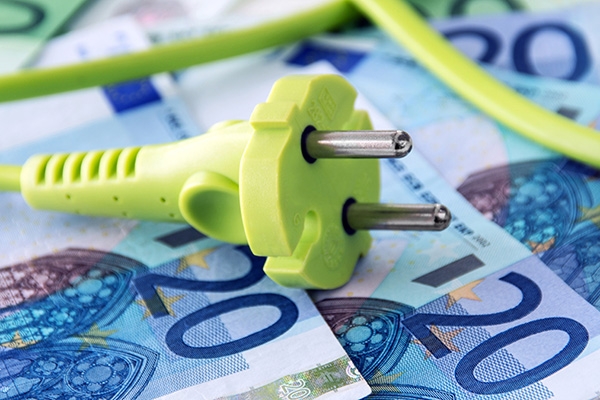Government agencies have been instructed to save electricity during the winter of 2022–2023 and to produce monthly reports on the trajectory of savings (see news article below). The University submitted its first brief summary of progress with energy saving in October.
Update 17 November 2022: The data in the article is based on the premises managed by Akademiska Hus plus the Rudbeck Laboratory. These buildings account for more than 90 percent of the university's energy use.
The reports will compare current consumption with the reference month of September 2018. By comparison with 2,468,200 kWh in 2018, the University purchased 2,229,956 kWh of electricity in September 2022. This represents a reduction of 238,244 kWh for September 2022, equivalent to almost 10 per cent of consumption in September 2018.
What this saving actually means may, of course, be difficult to understand. As a comparison, a normal house not heated by electricity has an annual consumption of approximately 5,000 kWh per year. A house heated by electricity consumes approximately 20,000 kWh per year.
The electricity consumption detailed above is accounted for by more than half of the University's premises, a total area of over 400,000 square metres. The aim is to facilitate the analysis of consumption over a period of time. For this reason, the report needs to be based on premises in use between 2018 and March 2023, when the task of reporting on electricity consumption is concluded.
Electricity savings
With consumption in 2018 as the reference point for the savings assignment, a relevant measure in the context is to examine the steps taken by the University and building owners to save electricity, heating and cooling since 2018.
The measures taken since 2018 are estimated to reduce University electricity consumption by approximately 4,200,000 kWh per year from 2022. It is difficult to accurately calculate savings from the measures taken due to the constantly changing nature of the University's premises and activities.
Some of the most effective measures taken:
- change to more energy-efficient lighting;
- optimisation of transformers;
- motion-activated lighting;
- overhaul of central vacuum cleaners; and
- rescheduling of lighting activation timing.
Solar cells have been installed on the University's buildings to generate electricity in order to supplement the savings achieved. The solar cells under installation since 2018 will produce the equivalent of approximately 1,000,000 kWh per year. Installation of the last of these solar cells is currently in progress.
The estimation for the annual total reduction in electricity purchases for buildings will consequently amount to approximately 5,200,000 kWh from 2022. This represents a saving from reduced electricity costs of approximately SEK 8.5 million per year for the University, in addition to the electricity savings for society. Please note that exact extent of savings is difficult to calculate in advance due to the wide fluctuation of electricity prices.
Savings in heating and cooling
Steps have been taken since 2018 to save on heating and cooling, in addition to the measures to save electricity. The most effective measures taken include:
- windows with better insulation;
- adjustment of heating, cooling and ventilation systems, and door openers;
- replacement of pumps and fans;
- better insulation;
- replacement of thermostats; and
- heat and cold recovery.
Environmental certification and procurements
Since 2018, the construction of new buildings has met the gold energy standard for Environmental Building (Miljöbyggnad) certification. Refurbishments carried out meet the silver energy standard. The university has also set energy-efficiency requirements for the procurement of energy-intensive products.
